The Rio Guadiana
Alcoutim,
Ayamonte,
Rio Guadiana,
Sailing,
Sanlucar,
Tavira,
Vila Real de Santo António

After getting some forum advice on Tavira, we decided to give this a try, as it would make a convenient stop to break up the trip from Culatra to the entrance of the Rio Guadiana and time our arrival for a rising tide. The conditions to Tavira were light and the distance to cover short, but the day before our toilet outlet had blocked up completely, probably due to some of the calcium building in the hoses crumbling off and blocking the elbow near the seacock. So after heading out to sea, we hove to (a bit like parking the boat in the water - you drift very slowly sideways but the boat is stable). I grabbed some tools and my diving mask and hopped into the warm water.
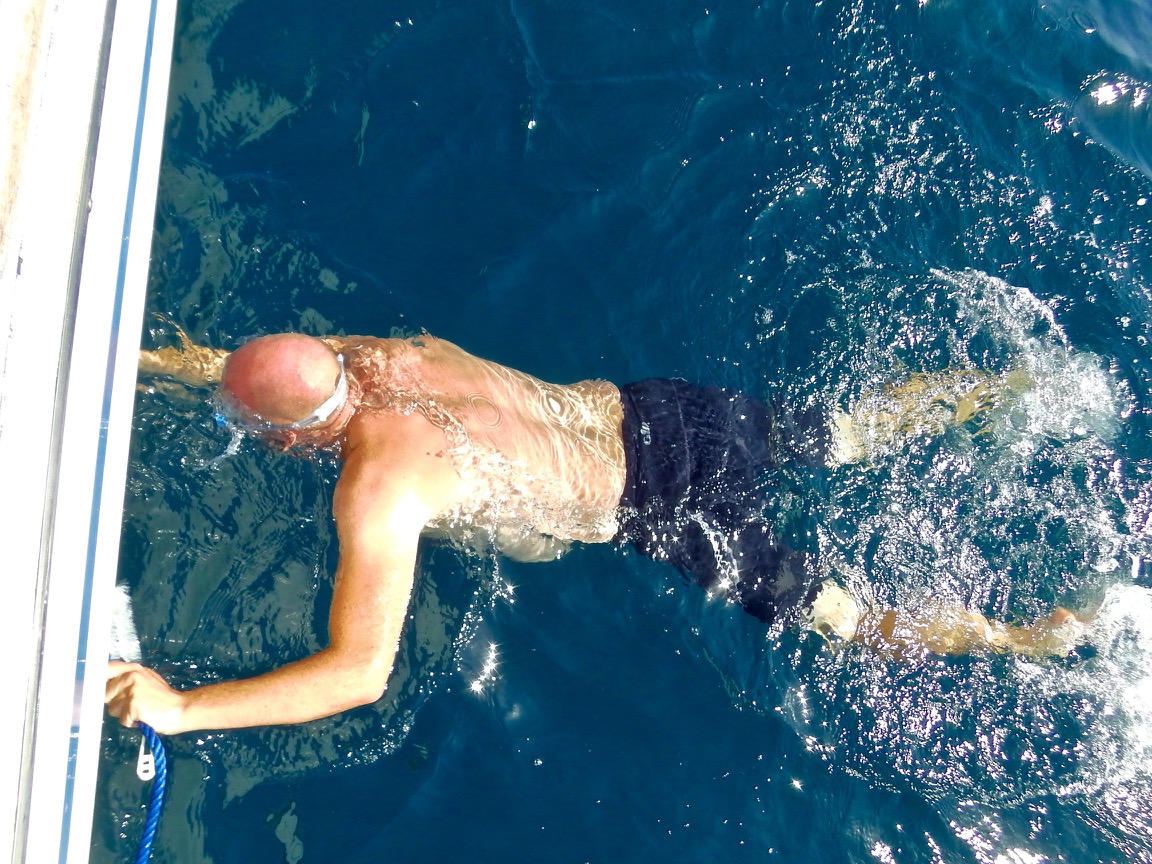
I was surprised at how clear and blue the water was out here. I could see the whole length of the boat under water! And there were little fishes hiding underneath. Probably waiting for delicious crumbs to drop down our kitchen sink. We've been swimming and diving around the boat plenty, but in most anchorages the water was a bit green and visibility not that good, unless you compare it with the total murk in the english channel perhaps. But out here it was amazing. After the fun job of poking around in Songbirds "butthole" and chunks of (mostly) calcium crumbling in my face as a reward, Elvyra pumped the toilet a couple times and we cheered when it worked again. I felt the need for a shower, and while I did that, Elvyra went for a naked swim around the boat in the amazing blue water. We reluctantly dried off, tacked the Genoa and continued onwards to Tavira.
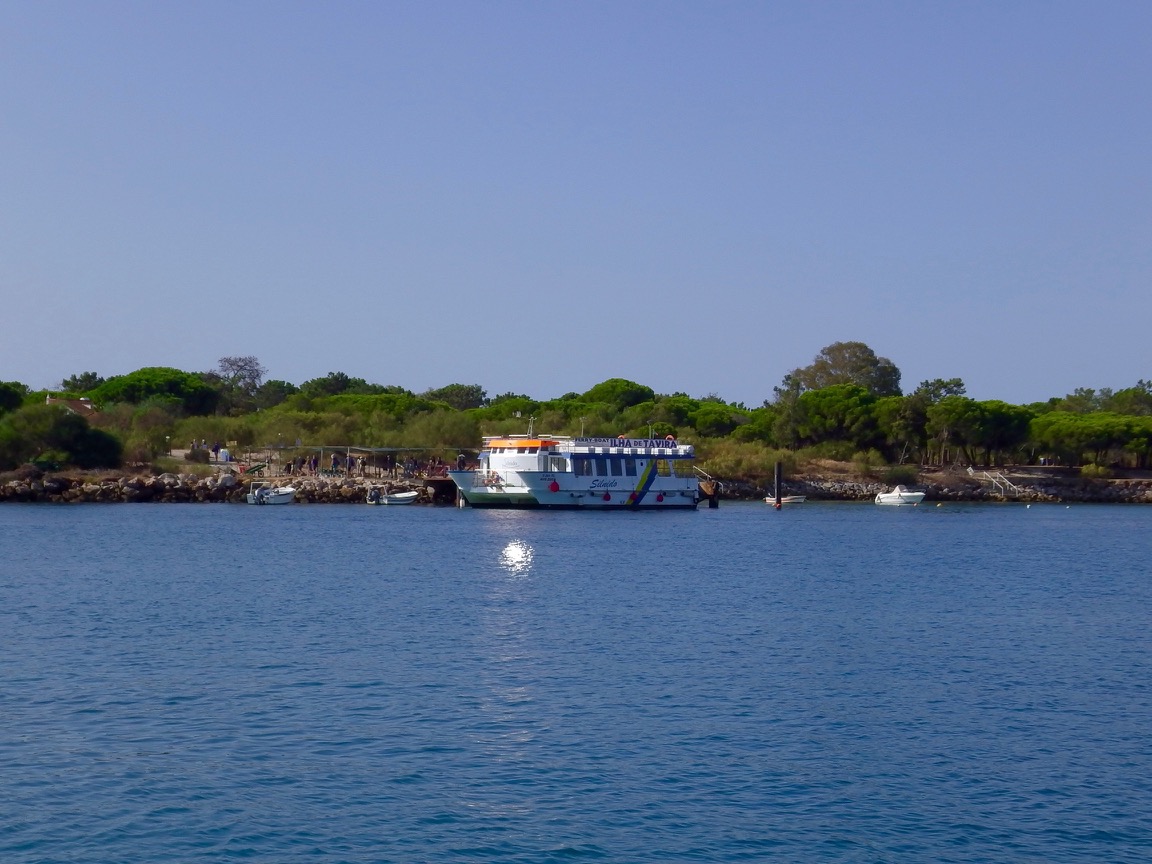
We spent the night at Tavira, after some hijinks involving surprisingly shallow spots and a daring exploration of the westwards channel at snail speed, with Elvyra reading out the depths to me. Tavira actually connects to the Ria Formosa, alas not for boats of our 2m draft. The next day we left around noon, carefully creeping out of the shallow exit and then slowly sailing to the entrance of the Rio Guadiana to time our arrival for the latter half of a rising tide. This is because the river has constantly shifting sand banks in front of it and so charts are never up to date. We had found some good advice online though (SY Fuga and Eos) and made it in without problems.
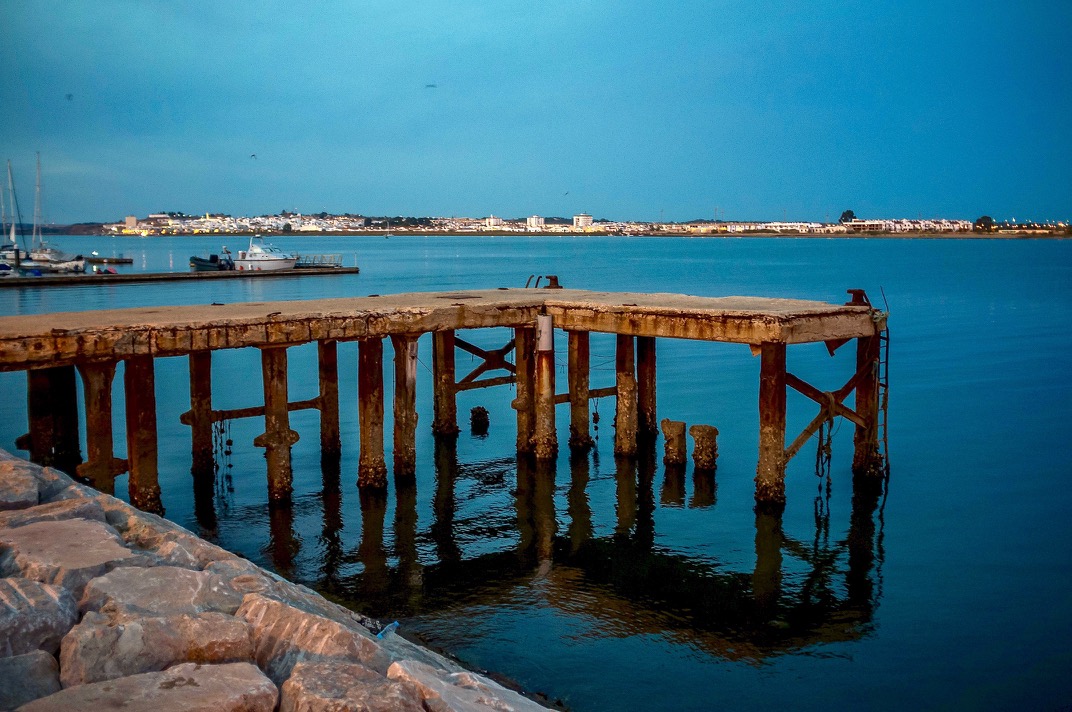
The river forms the border between Portugal on the west side and Spain on the eastern bank. The border zigzags more or less down the middle of the river, so we flew both courtesy flags from the starboard spreader as going up the river bends meant you're crossing the border back and forth every few minutes. Our next planned stop was Vila Real de Santo António (the Royal Town of Santo António), which from now on we shall refer to as VRSA. The marina here lies in the river, exposed to its full current, and can be fairly tricky. The only space available was on an alongside pontoon, which had a long space for us, so we just went for that and docked without problems until marina staff came running down the pontoon and helpfully stood on the mooring line Elvyra was trying to cleat off, but even such accidental sabotage did not stop us from a smooth berthing. He then proceeded to tell us off for mooring unassisted. Apparently the place is somewhat accident prone due to the strong river currents.
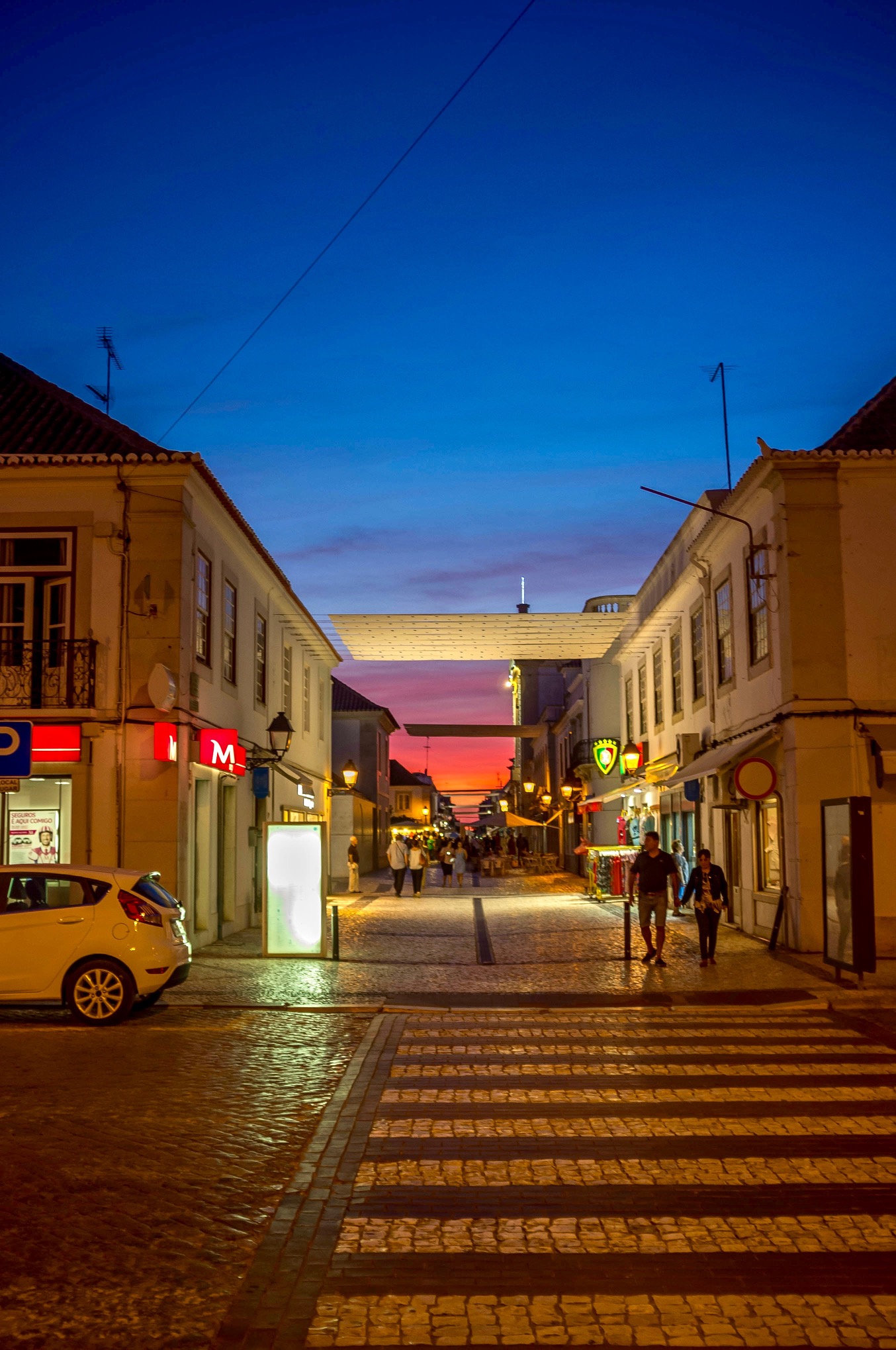
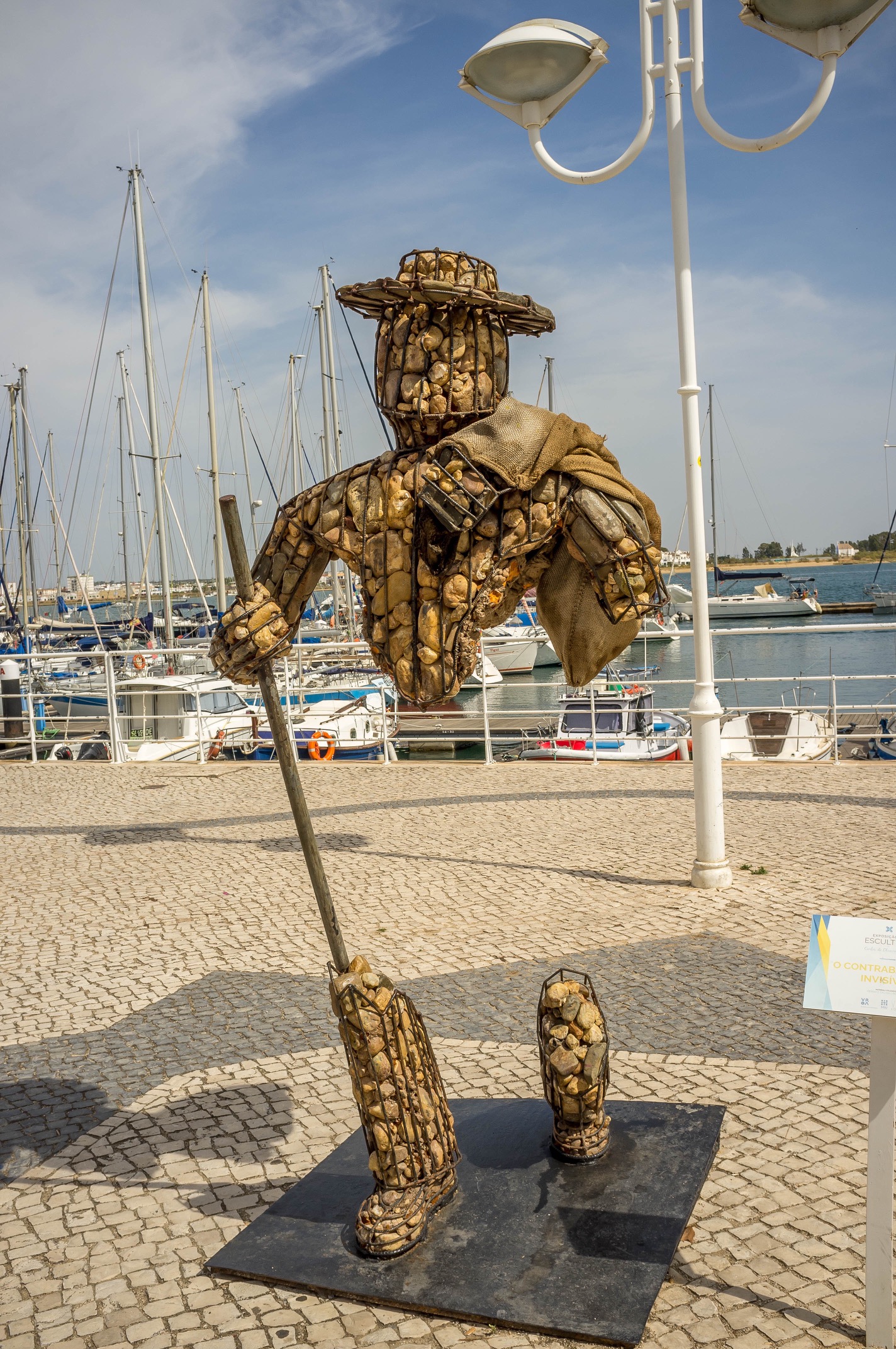
The town of VRSA was lovely. We were berthed two minutes from the center, there were all sorts of shops everywhere, an art exhibit along the river, a municipal market, a flea market and Lidl within walking distance along completely flat roads. Unlike previous stops on the western Algarve, tourism here had not (yet?) overwhelmed the town, prices were much more normal and the shops were selling household supplies instead of cork handbags. Elvyra even spotted a Russian/East-European food store, so she got to practice her language skills and we stocked up on Semechki and Gulyáskrém.

The marina itself was not brilliant. Staff was polite, but rather inflexible, and the facilities were clearly an afterthought, being squeezed into a former storage room in the center of the restaurant. It was so tight you had to open the door of the toilet cabin to pull your pants up. No Wifi, electricity cost an extra fee and there was a 20% markup for the alongside pontoon, which of course was the only one with space. We watched the locals do some exciting berthing while the river current was in full flow, which involved a lot of fendering and shouting. Seeing that, we planned our departure for the afternoon's slack tide, but were told if we left after 12:00:00 we would have to pay for another day. So we left with the current still going a fair bit. This time we were parked backwards to the flow. The boat normally steers very well in reverse, so I figured this wouldn't be a problem. We undocked easily enough and faced stern into the current, but for some reason (eddy currents around pilings and other boats I suspect) were swept around and ended up doing an unplanned 180° turn in the fairway, which was only just as wide as the boat was long, and not everywhere. Elvyra grabbed a big fender and ran around the boat to whichever side was getting closest to other boats while I was furiously using throttle and helm to swing Songbird around faster than I'd ever done before, as with the keel facing its wide side into the current, we were being swept down the fairway pretty quick. Songbird did not disappoint and the boat came around well before we ran out of space and we did not touch anybody. Poor Chirp (our dinghy) was not too happy being towed through all of this this though and tried to hide under someones stern overhang, but was soon dissuaded from such cowardice.

After this light entertainment, we went across and slightly up the river and anchored just downstream of the big bridge that crosses it here. The bridge had about 18m clearance (at high tide and at its highest spot), and we had about 17m air draft (height of the boat from the waterline), plus a more or less bendy VHF antenna on top of that, so I thought it prudent to only pass underneath at low water. The river is wide, but deep water is only found in a narrow channel. We'd be entirely reliant on our engine, as there was simply not enough room (nor wind) to sail ourselves out of trouble, so I felt this was a good time to bring our kedge anchor on the aft deck, attach it to the rode and have it all ready for deployment in case of any issues with the engine and/or bow anchor.
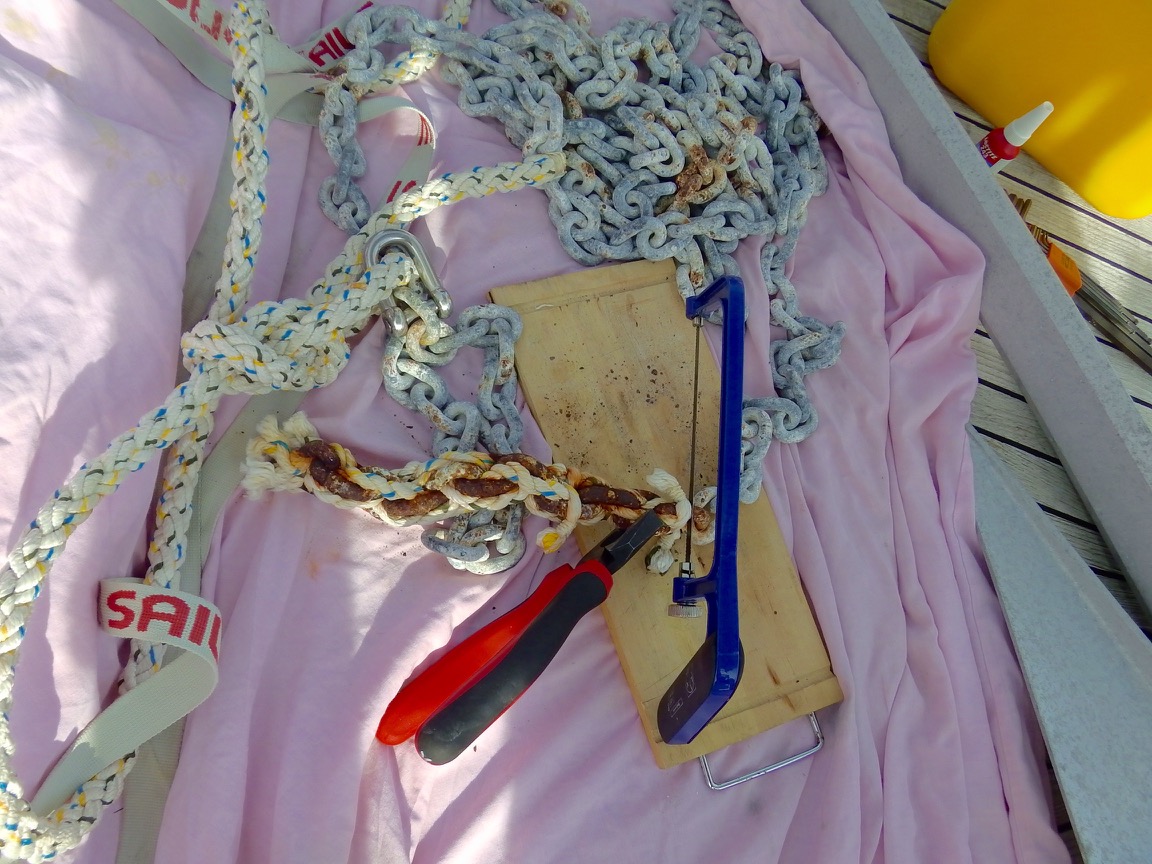
We motored up the river for a while, stopping at a wide bend with room to anchor just below Foz de Odeleite. After the bridge, the landscape soon changes drastically. It was an arid shrubland with some trees, most of it looking very unpopulated. The odd farmhouse, mostly abandoned, and some new construction (also abandoned) on the distant hills. It has an odd charm, and the quiet nights and absence of ocean swell made for great sleep.
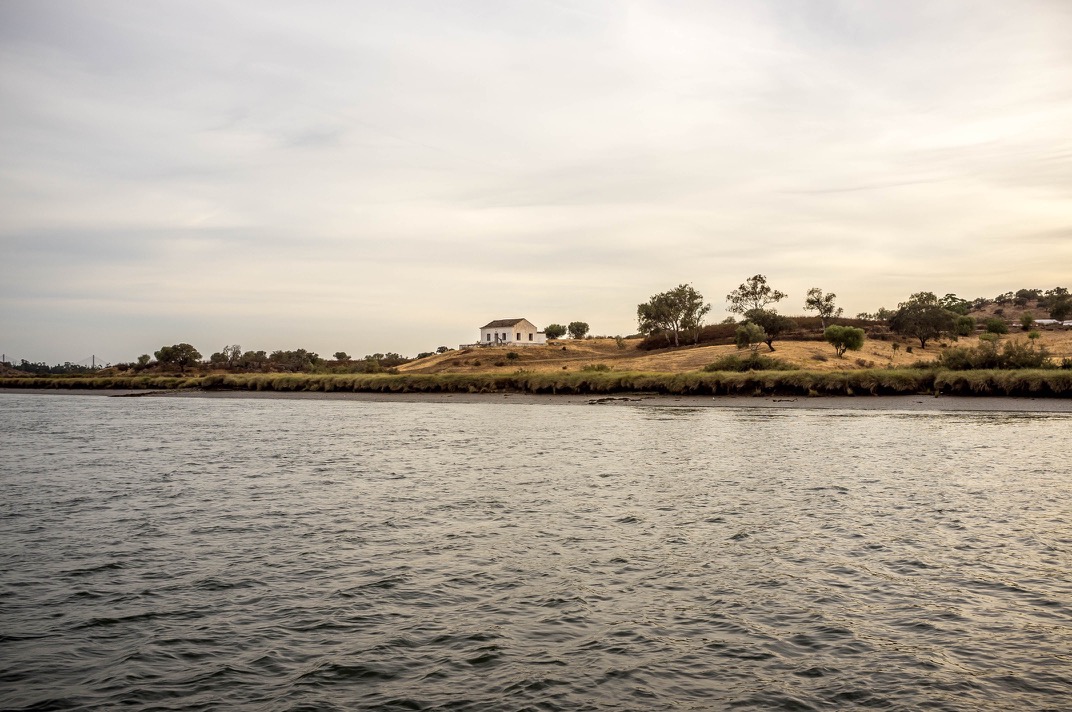
Going up the river, there were signs of what we've been told about: Other sailboat cruisers that had sprouted roots. You could see a lone sailboat, often somewhat dishevelled looking, on a single mooring in the river, in front of a tiny self-made jetty or pontoon and what seemed to be a garden shack, barn or old farmhouse that had slowly evolved into someones dwelling place.

Further up the river, Alcoutim is the least densely populated municipality in Portugal. Right across it is the Spanish town of Sanlúcar, historically it's enemy, with castles facing each other on each side of the river. These days they are connected by a zipline across the river and little ferries connecting the small pontoons in front of each town.
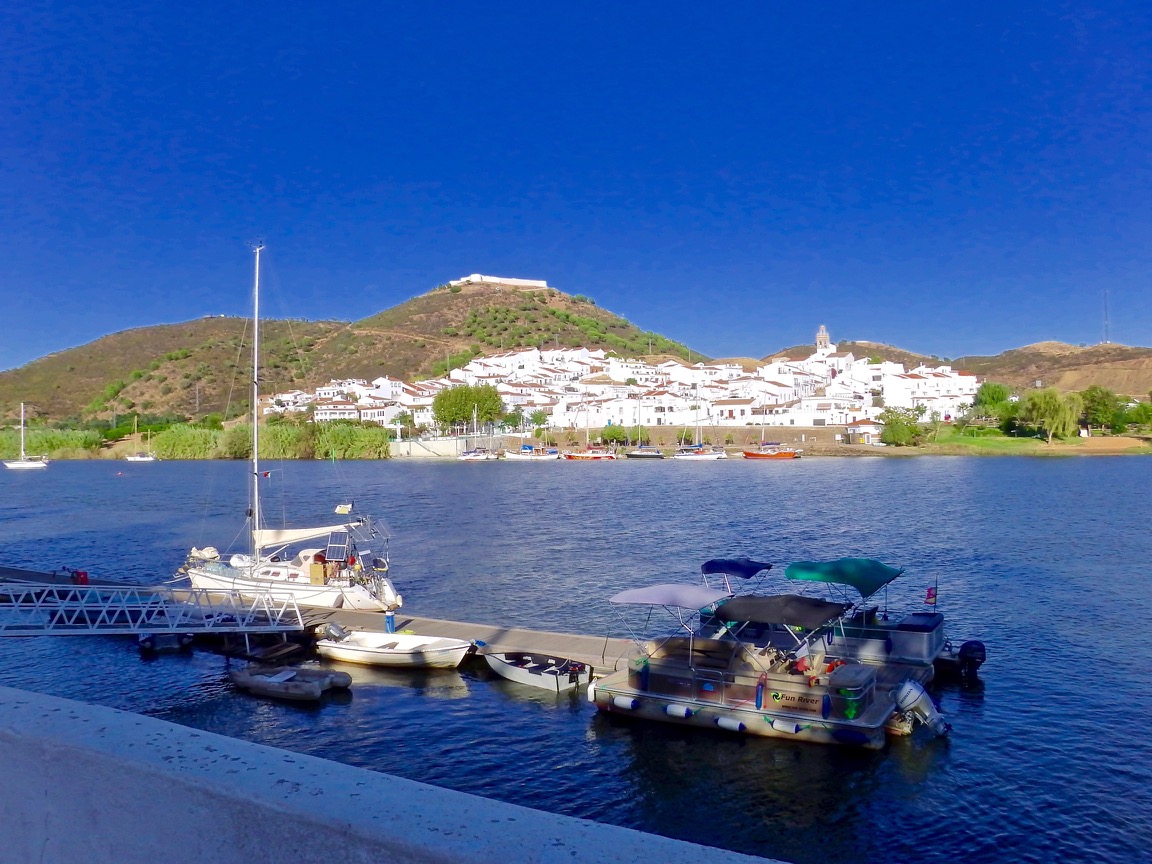
We put the outboard on the dinghy, as the river current was too strong for rowing against and puttered up the river, visiting both towns, stocking up on vinegar (the toilet was still giving us trouble) and going for a long walk in each. These towns are fairly remote, but popular amongst cruisers, some of whom got stranded here permanently and have even bought houses and settled down. There's a good number of boats anchored or moored in the river and the pontoons were busy. Notices offered boaty items for trade and an english language book swap. Shopping is minimal but sufficient for basic needs, and prices are good - we paid €1 for a beer at the bar.
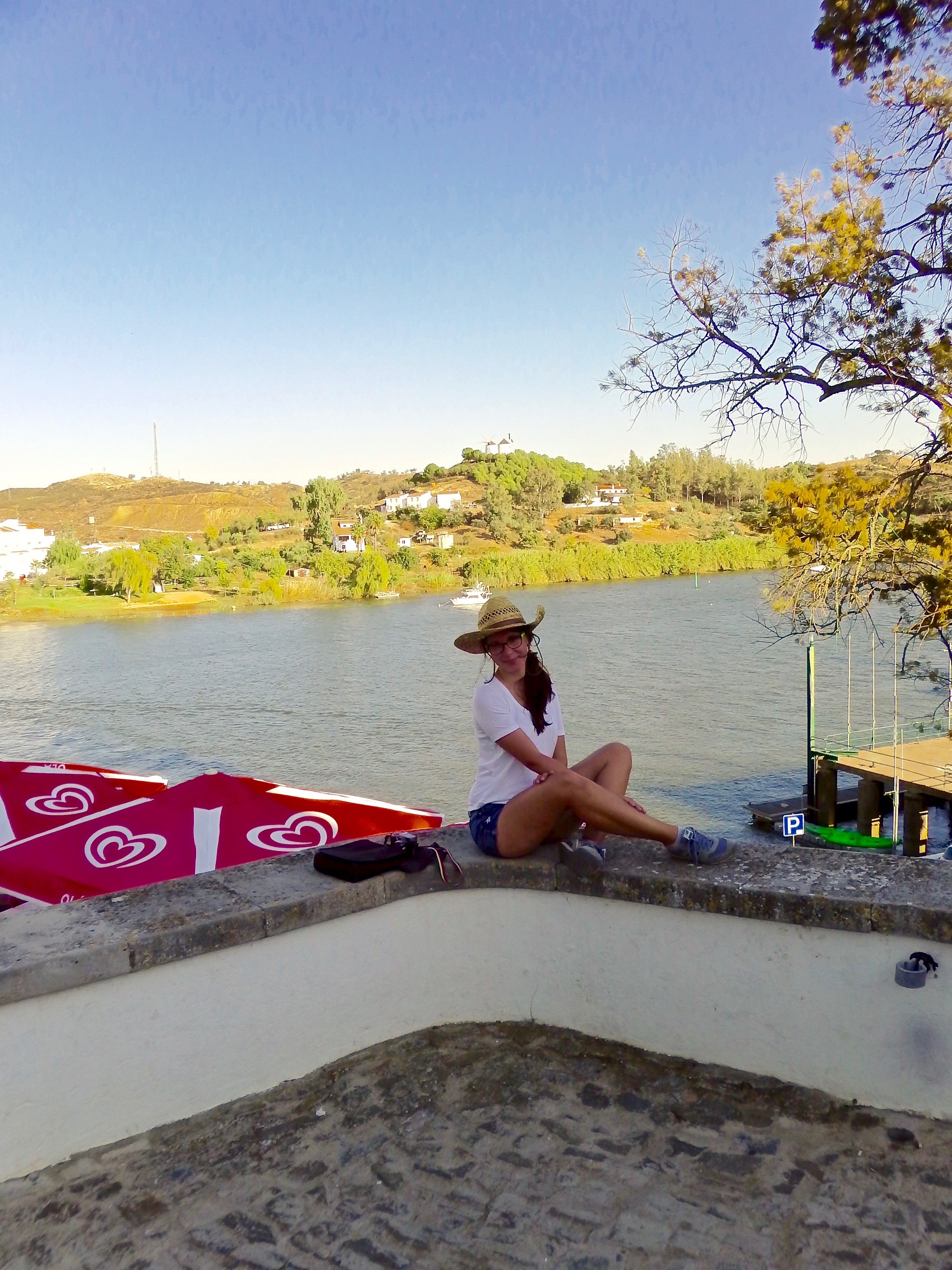
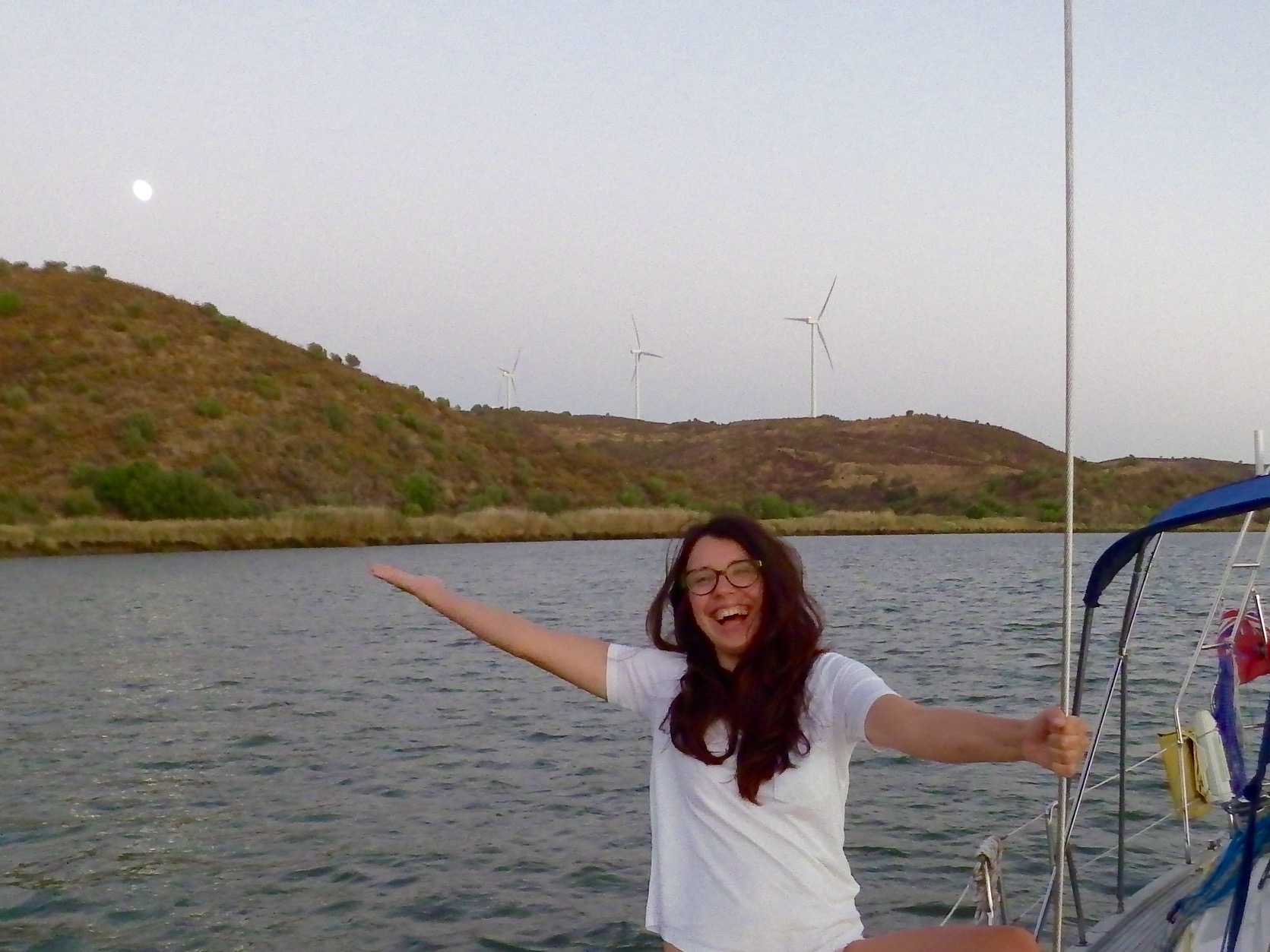
It's possible to go further up the river, but it gets increasingly shallow, and more importantly, it was really quite hot for October, with 35°C daytime temperatures — considerably warmer than on the coast. There was no swimming to cool off, as the river was quite mucky and full of driftwood and giant jellyfish (see video at the bottom). We slowly made our way back downriver, spending another night at the bend just below Foz de Odeleite, which had become one of our favorite anchorages due to the peace and quiet found amidst lovely landscapes here. Again we waited for low water to pass under the bridge and then pulled into Ayamonte, the town on the Spanish side, right across from VRSA.
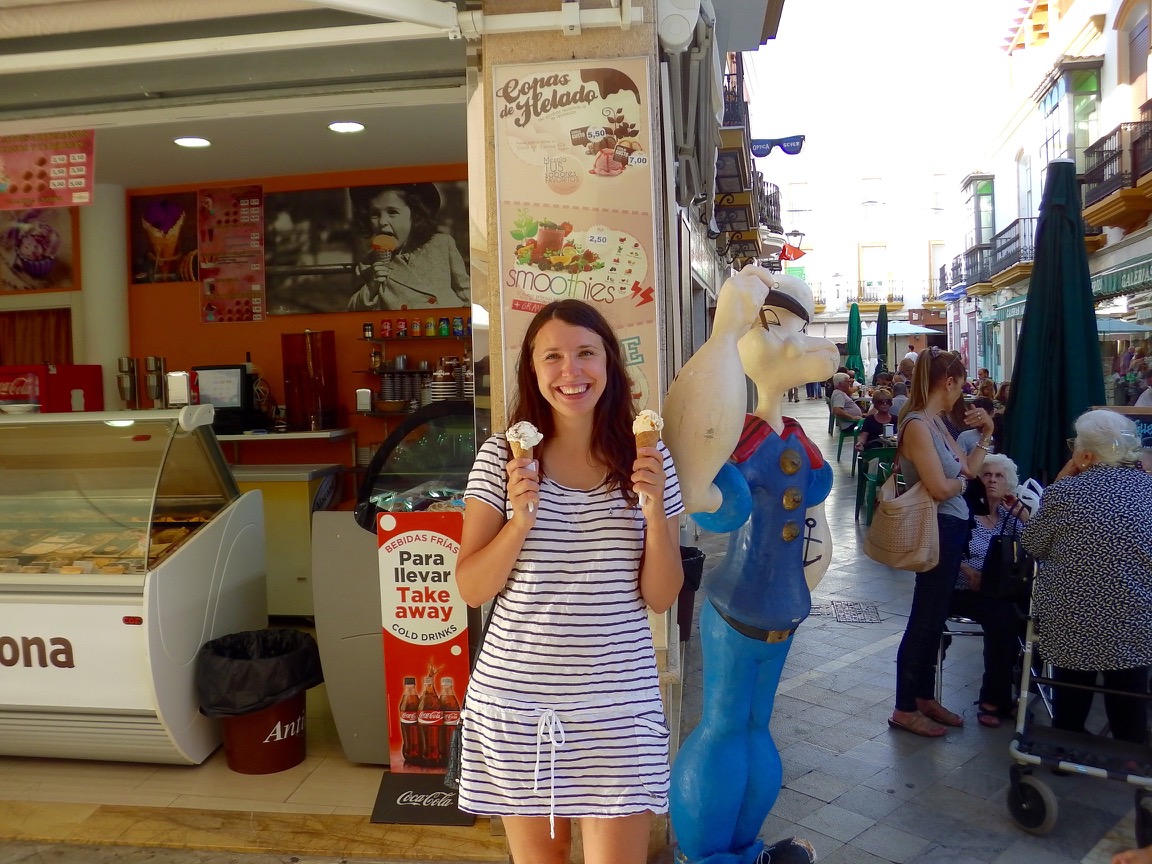

By now most marinas had dropped to the much more affordable low season prices, so we stayed three nights in Ayamonte, explored the town and while I scavenged the huge Chinese import store and the local chandlery for some paint and shackles, Elvyra found herself a lovely new dress. The town was fine, but not especially memorable. We were hoping to take on some fuel at much lower Spanish prices, but much to the delight of the VRSA side, the fuel pontoon in Ayamonte had been left unfinished for years.
Video to follow soon!